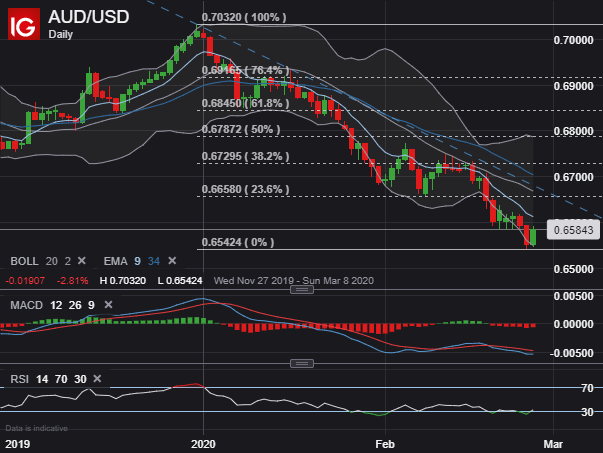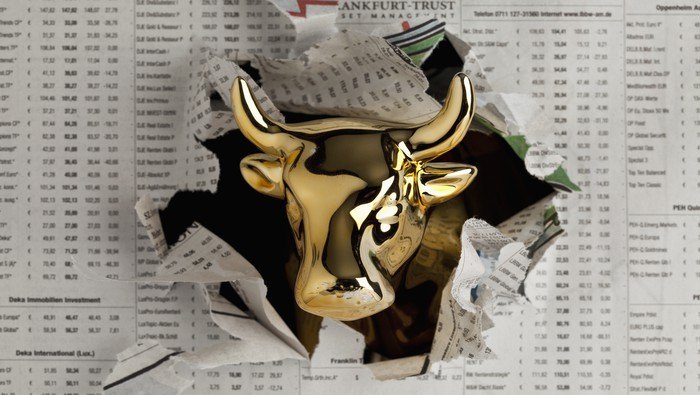AUSTRALIAN DOLLAR FORECAST: AUD/USD PRICE ACTION HINGES ON CORONAVIRUS, CHINA PMI
- AUD/USD rebounds on widespread weakness in the US Dollar
- Spot AUD/USD prices might attempt to recover recent downside as traders inflate FOMC rate cut bets
- The Australian Dollar remains at risk ahead of China PMI data due for February amid the novel coronavirus outbreak
The Aussie gained ground throughout Thursday’s trading session on balance. This comes despite a massive risk-off move reverberating across the market on the back of growing coronavirus concerns.
Strength in the Australian Dollar was particularly felt relative to the Greenback with spot AUD/USD prices rising 0.7% before coming off intraday highs.
A violent selloff in the US stock market was accompanied by another sharp rise in Fed rate cut probabilities priced in by traders, which likely explains the spike lower in the US Dollar.
With the S&P 500 Index getting hammered, and investors growing increasingly dependent on the Federal Reserve to provide accommodation during turbulent financial conditions, the trend of ramping Fed rate cut expectations might continue over the near-term.
AUD/USD PRICE CHART: DAILY TIME FRAME (NOVEMBER 2019 TO FEBRUAR 2020)

This catalyst might help spot AUD/USD price action extend its rebound off the bottom channel of its Bollinger Band toward a test of its 9-day exponential moving average.
Positive divergence shown on the RSI and MACD indicators from the January 31 and February 26 lows suggest there is potential for AUD/USD to churn higher.
Beyond the 9-day EMA, technical resistance could be posed by the 23.6% Fibonacci retracement level of the Aussie-Dollar’s year-to-date trading range.
| Change in | Longs | Shorts | OI |
| Daily | 2% | 1% | 1% |
| Weekly | 27% | -2% | 12% |
However, the recoil in spot AUD/USD price action could prove short-lived. There are now over 75-bps of Fed rate cuts expected by December, which seems overly-exuberant and starkly contrasts recent guidance of a neutral monetary policy stance from Fed officials.
The Reserve Bank of Australia, on the other hand, is only expected to cut rates by about 35-bps by year-end. That said, there could be a convergence between FOMC and RBA interest rate cut expectations.



One fundamental catalyst that might spark an acceleration in RBA rate cut bets could be the upcoming release of China PMI data due February 29 at 01:00 GMT.
The brewing coronavirus pandemic began in China and paralyzed economic activity across the world’s second largest economy for most of the month.

Correspondingly, worse-than-expected China PMI data could have a knock-on effect reflected in Australian economic data seeing that the two nations depend heavily on one another for trade. This may, in turn, cause an increase in RBA rate cut probabilities and subsequent drop in AUD/USD.
-- Written by Rich Dvorak, Junior Analyst for DailyFX.com
Connect with @RichDvorakFX on Twitter for real-time market insight






